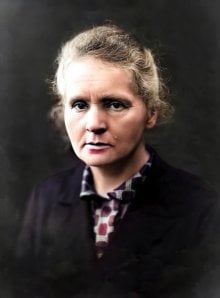This work is an in-depth study on isotopy and isotopic elements. Marie Curie, in collaboration with her daughter Irène Joliot-Curie, examines new advancements and theories in the understanding of isotopic elements. The book showcases their pioneering research in the field of isotopes and their possible applications.
 Marie Curie's inspiring biography, born November 7, 1867, overcoming obstacles and pioneering scientific discoveries. Learn from her powerful quotes.
Marie Curie's inspiring biography, born November 7, 1867, overcoming obstacles and pioneering scientific discoveries. Learn from her powerful quotes.
More about Marie Curie